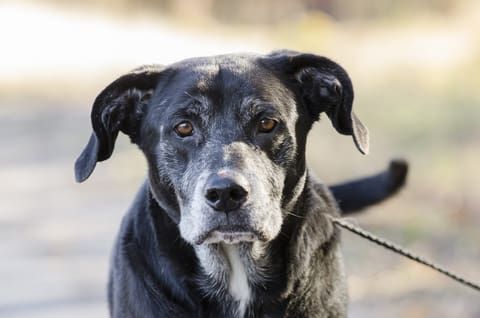Every veterinarian who has treated a dog with HSA wishes for better early diagnostics and more effective therapies to stop the growth of the HSA tumors. “The wish list for every veterinary oncologist starts with trying to find some way to deal with hemangiosarcoma,” says Rodney Page, DVM, MS, Professor of Oncology, Director of the Flint Animal Cancer Center, and Principal Investigator for the Golden Retriever Lifetime Study. “It’s a tumor that’s relatively unique to dogs and has completely evaded all attempts to understand what’s going on in a way that’s able to be modified in the patient. It’s a rapidly fatal cancer and one that desperately needs better diagnostic tools and treatments.” (Quoted from “Cancer Research: Looking Back, Moving Forward,” morrisanimalfoundation.org, March 27, 2019.) Fortunately, research on HSA is taking place in many locations:
- Ethos Veterinary Health’s Canine Hemangiosarcoma Molecular Profiling (CHAMP) project is a multi-faceted prospective study of canine splenic HSA. One of its first undertakings was to assess the value of personalized medicine in dogs with HSA and then validate the usefulness of a potentially prognostic test. Through a collaboration between Ethos and the Translational Genomics Research Institute (TGen), the molecular characterization of genomic alterations in HSA was recently completed. CHAMP hopes to identify dogs with distinct prognoses and develop molecularly targeted therapies for each patient.
- Ethos Discovery (a division of Ethos Veterinary Health, LLC) is evaluating Rapamycin to determine whether it can improve treatment outcomes for dogs with HSA and to gain an understanding of which HSA genotypes may benefit most from its use. Rapamycin is known to have an immunosuppressive that provides significant anticancer activity and has been approved for use in treating several human cancers.
- At the Flint Animal Cancer Center at Colorado State University in Fort Collins, researchers are evaluating the effectiveness of VDC-597 administered orally to dogs with Stage I and II splenic HSA who have undergone splenectomy. VDC-597 is an oral agent that has antitumor and antimeta-static activity in human and mouse cancer models as well as in canine HSA cell lines.
- The Veterinary Clinical Investigations Center at the University of Pennsylvania in Philadelphia, in partnership with NovaVive, are in the follow-up stage of a study on the efficacy of treating canine splenic hemangiosarcoma with intravenous Immunocidin, the mycobacterial cell wall fraction derived from non-pathogenic Mycobacterium phlei, stimulating anti-tumor activity. It is currently approved for the treatment of mammary cancer in dogs.
- The University of Minnesota Veterinary Medical Center, Purdue University, and University of Pennsylvania are collaborating on a study to determine whether propranolol (a blood pressure medication) used in combination with standard-of-care doxorubicin chemotherapy can improve outcomes for dogs with HSA. Propranolol can kill HSA cells in the laboratory; it has also been effective in reducing disease progression and increasing survival time in humans with angiosarcoma (which is similar to canine HSA).
- A study at the New York State College of Veterinary Medicine at Cornell University aims to find and test new drugs that can prevent tumor growth. The long-term goals of this project are to identify better procedures and drugs to treat canine HSA as well as to test the ability of newer targeted drugs in preventing tumor growth or recurrence.
- The Shine On Project, led by Jaime Modiano, VMD, PHD, at the University of Minnesota College of Veterinary Medicine, is designed to detect HSA cells in the blood at the earliest onset by way of a new, targeted drug called eBAT. The drug was developed at the University of Minnesota with the goal of destroying the cells responsible for tumor formation, thereby stopping the formation of malignancies. The process “will use a blood test to look for the cells responsible for establishing and maintaining the disease, and then use an experimental drug treatment that attacks those same cells in order to prevent development of the tumor.” Researchers at the college have been studying the biology and the behavior of HSA for more than 10 years.
- A recent retrospective multicenter observational cohort study of 406 dogs determined that the risk of HSA diagnosis in dogs presenting with blood accumulation in the abdomen could be predicted using a simple risk score modeled on four predictors: body weight, total plasma protein, platelet count, and thoracic radiograph finding. This evaluation process could aid in identifying and treating dogs at lower risk for this diagnosis. (“Development and validation of a hemangiosarcoma likelihood prediction model in dogs presenting with spontaneous hemoabdomen: The HeLP score,” Schick et al, Journal of Veterinary Emergency and Critical Care, Volume 29, Issue 3, 17 April 2019.)
- Michigan-based Metta Pets is currently enrolling dogs at select referral centers around the United States for a clinical trial, “Investigation of a traditional Chinese medicine herbal therapy protocol for treatment of dogs with Stage II splenic hemangiosarcoma after splenectomy.” They will evaluate the impact of a standardized bupleurum-based herbal formula administered with vitamin D supplementation, Yunnan Pai Yao, and coriolus mushroom granular extract in canine patients diagnosed with stage II splenic HSA following splenectomy. To date, no toxicities from the treatment have been noted, including one dog who received a significant repeated overdose due to client non-compliance. Preliminary data suggest improved survival times when compared to chemotherapy treatment and an increase in the number of patients living to one year or more. This study will assist in determining if these promising findings are repeatable when a larger number of patients are evaluated.
Related Posts
Hemangiosarcoma in Dogs
You can’t help it: Reconsidering past decisions after a devastating diagnosis
Making the Most Out of the Time You Have







This is a really helpful article! i used this program shorturl.at/jxzN4 to understand and train my dog well , thought it might help others! Do check it out if you want to train your lil ball of fur shorturl.at/jxzN4
Is anyone doing a large scale epidemiological study to look for commonalities among affected dogs? Since it is a cancer mostly occurring in dogs, it seems worthwhile looking at factors many dogs would have in common – such as diet.
Laurie, I first became aware of this type of cancer earlier this year, when my pup (12 yr old mixed breed) was found to have a splenic mass. Unfortunately, the mass had already ruptured when we attempted the splenectomy, and he had lost enough blood that he never recovered. The cancer was also in his liver and I’ve wondered, as you have mentioned, what commonalities are present with the other dogs afflicted. Since it seems to be most problematic when present in the liver and spleen, I have wondered if common medications (like flea/tick or heartworm preventatives that are species – specific) might be a factor to consider.
My dog was diagnosed with this cancer after he had a splendectomy.
They gave him three months at best to live. They didn’t advise chemotherapy. They mentioned a Chinese herb that helps clot blood. I bought some but after doing more research decided to give him curcumin twice daily. He lived a full life for over a year and a half. Doctors said they’d never seen another dog live that long with this cancer. If this could help any researchers, I be glad to give them more information.
Sara, I know this post is old but I’m wondering if you can tell me which herb you used? We have just received the dreadful diagnosis and will do anything to help our birthday girl.
My 14 year old Golden Retriever was diagnosed with HSA, after splenectomy, due to an active bleed. The actual tumour size was small 3cm x 5cm. As with all HSA the prognosis was poor even with chemotherapy. She was given three rounds of doxorubicin. No further rounds were given due to changes to her hear on echo (developing cardio myopathy). However I am very happy to say she is still going strong nearly three years later. (January 1st 2020) will be three years since her surgery. She has just celebrated her 17th birthday.
Amanda, hello!
I was reading your comments in DNM of November 10th…I found it inspiring; especially that a Golden can survive to 17! Can you let me know what diet you have been giving your Golden? I’d love to replicate it for my two Golden’s. This HSA is terrible and I’ve lost two Golden’s from this disease…and at relatively young ages…8 & 10yrs.
I do believe diet is relative to survival and I am determined to have both surviving Golden’s live and be happy as long as I am able to help them do so. I do hope you would share more.
Lost my Lennon at 8 a month ago so heartbroken I thought we caught but I guess not he just one day passed. My son has a golden pup 1/2 American and 1/2 English I to would like to know what Amanda feeds her golden. 17 is a blessing to have a golden that long.
thank you
Hi Karen,
I am very lucky to still have my girl. I have always fed a good quality dry food. When she was young it was Hills science diet. The last few years she has been on Royal Canin dental food. Amanda.
Hi John!
I have fed Bailey on a good quality dry food since she was a puppy. When she was younger she was on Hills Science Diet puppy, then the adult version of the same brand. Bailey is currently on Royal Canin Dental and has been for the past 4 years due to some dental issues. Hope this helps. Amanda
I have been blessed with both my Golden’s living to 15 yrs without indication of cancer. I also feed a high quality dry food with different suppplements and added fresh foods like salmon, eggs, chicken, etc. I am wondering if you used any of the Chinese herbs or curcumin after the diagnosis. I have not heard of any dog living that long after being diagnosed with HSA.
Amanda!
Sorry, I indicated the wrong source of info about your post concerning HSA..it was in The Whole Dog Journal.
My dog was just diagnosed. She had become lethargic and was not eating well. One day she rolled over and we saw a huge lump on her belly. She had a tumor the size of a grapefruit and she is only 47lbs. It is a complete miracle that it hadn’t burst, but obviously it was taking a heavy toll. 14 days after surgery we discovered it was HSA Terrible it takes so long to find out as days matter with this cancer. We started her on I’m Yunity right away. I visited a holistic vet who also prescribed the following: yunnan baiyao, Stasis Breaker, and Wei Qi Booster….all Chinese medicine. She has had no side effects. She is playful and happy. We also decided to try chemo to see how she handles it. We haven’t had our first round yet, that is tomorrow. Thank God for amazing specialists who fight for our pet’s health.
We are stage 1, no rupture and no signs of metastasis to liver or lungs. My girl is 10.5 lab mix.
Like you I wonder what caused it. I believe in our case it was due to a nasty round of ITP 1.5 yrs earlier where they had to shutdown her immune system for 6 months. She had nothing to guard her. The ITP was caused by unnecessary vaccination recommended by my DVM. Looking back I feel so guilty for being so blindly trusting.
We are doing everything we can to have the best days possible. She is also on great low glycemic diet, no kibble.